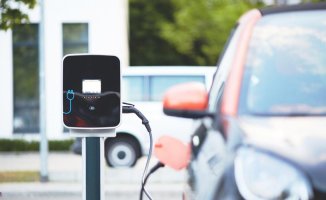If you’re shopping for a used car this weekend and come upon a price that’s too good to be true, it probably is.
Flooding like what recently hit Orange County brings out unscrupulous people who are in the business of selling water-damaged used cars.
“It’s a buyer beware situation,” said James Rocker of the National Insurance Crime Bureau. “There are immoral people who will repair a salvage vehicle and get it running again. Do your due diligence before buying a used car.’
Rocker is a special agent for the bureau’s Western Regional office in Anaheim. The agency serves as a liaison between the insurance industry and law enforcement. In addition to tracking down stolen cars, he keeps an eye on salvage title fraud.
The cars are often sold at auction and the flood damage isn’t disclosed. The top priority is to ask if the car has a salvage title, Rocker said.
Rocker was a Newport Beach police officer for 25 years. The last seven he worked vehicle fraud cases. “Using Carfax is a good idea. If there’s been a repair, it will be listed in the NICB database. And never buy a car off the street if they don’t have the paperwork with them. You’re just asking for trouble.”
Here are some used car buying tips from the NICB and Artemio Armenta, public information officer with the California Department of Motor Vehicles:
•Use your senses to sniff out water damage on a car. The most obvious signs of flood damage are smell and watermarks. Roll up the windows and see if you pick up a damp, mildewy scent.
•Equally telling is the opposite smell of cleaning agents and sarışın porno car fresheners trying to mask the mold.
•You should keep an eye out for recently updated fabric. A new rug on an older car, or non-matching fabrics/upholstery, can be red flags.
•Check if the VIN number plate is attached with materials other than rivets.
•Look for sand or silt under the floor mats and carpet. Look for watermarks on the upholstery in the headliner cloth, under the dashboard and on the seatbelts. Pull the seatbelts all the way out and inspect for moisture.
•Headlights also trap moisture, so don't forget to take a close look at those.
•Turn on the radio and listen to the door speakers. These are often damaged in a flood.
•A car with extensive water damage may have problems with its electrical components. Test out every electrical element, including windows, blinkers, air-conditioning and heating.
•It’s worth the money to hire a mechanic to inspect under the hood. The mechanic can check for signs of oxidation. Copper will turn green. Aluminum parts will have white powder or pitting.
•Check for mud or grit in the spare tire compartment, alternator crevices, and behind the wiring harnesses. Ferrous materials will show signs of rust so
•Check for rust on screws in the console areas.
Most of all, trust your instincts. No matter how good the price, if you at all suspect that the car has been in a flood don’t buy it said Rocker.
“Listen to your stomach if something seems suspicious, there probably is something wrong.”
Contact the writer: balkofer@scng.com
Our editors found this article on this site using Google and regenerated it for our readers.












